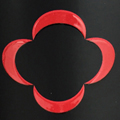Quinta da Plansel
by
Kathy and Terry Sullivan
 Summary: Quinta da Plansel is much more than a winery and vineyard. The family-owned winery incorporates horticulture, vineyards and provides thousands of grapevine grafts for other grape growers. In addition, a love of art dominates the property both in the landscape and a private art gallery. A beautiful tile art piece depicting a harvest is on the outside wall of one of the buildings.
Summary: Quinta da Plansel is much more than a winery and vineyard. The family-owned winery incorporates horticulture, vineyards and provides thousands of grapevine grafts for other grape growers. In addition, a love of art dominates the property both in the landscape and a private art gallery. A beautiful tile art piece depicting a harvest is on the outside wall of one of the buildings.
History
The name Plansel means “selected plants.” The property was originally purchased by Jorge Böhn, who moved from Germany to Portugal’s Alentejo region 40 years ago. Jorge discovered the beautiful Portugal country in the 1960s. After owning a winery in Germany, he decided to sell the winery and move to Portugal, a country where there were many grape varieties to be explored.
 Jorge knew that wine was an important product of Portugal and that many of Portugal’s grape varieties were not well known. After researching the numerous Portuguese grape varieties, he planted what he believed were the best Portugal grape varieties that would grow well in the Alentejo region. Jorge said, “We started when the Portuguese didn’t know much about their own varieties.” In the beginning, Jorge planted the vineyards with 50 grape varieties. Jorge has written six books on grapevine varieties and olive tree varieties.
Jorge knew that wine was an important product of Portugal and that many of Portugal’s grape varieties were not well known. After researching the numerous Portuguese grape varieties, he planted what he believed were the best Portugal grape varieties that would grow well in the Alentejo region. Jorge said, “We started when the Portuguese didn’t know much about their own varieties.” In the beginning, Jorge planted the vineyards with 50 grape varieties. Jorge has written six books on grapevine varieties and olive tree varieties.
 Jorge’s daughter, Dorina Lindemann, an oenologist, took the vineyards a step farther by creating the winery in 1997. Today Dorina’s daughters Julia and Luisal are planning to propel Plansel winery into the future. A black and white photograph of mother and daughters is on the wall in the cellar.
Jorge’s daughter, Dorina Lindemann, an oenologist, took the vineyards a step farther by creating the winery in 1997. Today Dorina’s daughters Julia and Luisal are planning to propel Plansel winery into the future. A black and white photograph of mother and daughters is on the wall in the cellar.
In one building, we viewed the tools that the staff uses to splint the grapevines, thus making the grafts. Another huge building, stored thousands of bunches of grafted grapevines ready to be shipped to growers.
Jorge’s intense interest in horticulture appeared again at lunch. Jorge excused himself for a little while because he was overseeing the transplanting of a 1,000-year-old olive tree.
 As we toured the property, we saw the passion that Jorge, his family and staff have for Plansel. We also saw numerous large sculptures adorning the property and learned that an artist created these colorful sculptures and Jorge displays them at the winery and vineyard for the artist.
As we toured the property, we saw the passion that Jorge, his family and staff have for Plansel. We also saw numerous large sculptures adorning the property and learned that an artist created these colorful sculptures and Jorge displays them at the winery and vineyard for the artist.
Vineyards and Winery
 The Plansel vineyards with 75 hectares (185 acres) are located 100 kilometers from the Atlantic Ocean. Twenty-five hectares are planted at the winery. The vineyards are planted with Touriga Franca, Touriga Nacional and Verdejo grape varieties. Harvest normally starts in mid-August. In the vineyards there is a chapel of Santa Margarida.
The Plansel vineyards with 75 hectares (185 acres) are located 100 kilometers from the Atlantic Ocean. Twenty-five hectares are planted at the winery. The vineyards are planted with Touriga Franca, Touriga Nacional and Verdejo grape varieties. Harvest normally starts in mid-August. In the vineyards there is a chapel of Santa Margarida.
The vines in the vineyard benefit from the diurnal temperature swings. With temperatures falling to 18º C (64º F) at nighttime, the grapes are able to retain their acidity and aromatic profile. The vines adorn rolling hillsides. At the time of our March visit, vineyard workers were pruning vines. At harvest time, only ripe grapes are picked and placed in lugs. The white grapes are cooled, destemmed and crushed while cold. Red grapes are crushed after harvest.
In the winery, the winemaker uses open fermenters for the red wines, using a pump-over process. Some fermentation tanks are slanted and they have a turbo inside that mixes the juice with the skins. White wines are fermented in a separate area. To produce a limited production brand, used barrels have their heads removed and fermentation takes place in the barrels.
In 1993 production was 1,000 liters. Now, production is around 400,000 liters.
Lunch
Our large group of 30 plus people were invited to enjoy lunch in Jorge’s private dining/art gallery area. The Portuguese dishes were delightful and paired well with the Plansel wines as well as the lovely artwork on the walls.
Wines
 Marquês de Montemor 2017, Alentejo DOC, with 13% alcohol, was considered an entry level wine. It was a blend of Arinto, Alvarinho, and Gouveio. This wine was a yellow color. The aroma offered citrus and mineral. The taste included citrus, a hint of peach pits and mineral. The finish was crisp, fruity and mineral on the aftertaste. According to the back label, “This wine is a tribute to the Marquês de Montemor, a noble known to be an avid curious about indigenous vines from the north of Portugal and its implementation on the south.”
Marquês de Montemor 2017, Alentejo DOC, with 13% alcohol, was considered an entry level wine. It was a blend of Arinto, Alvarinho, and Gouveio. This wine was a yellow color. The aroma offered citrus and mineral. The taste included citrus, a hint of peach pits and mineral. The finish was crisp, fruity and mineral on the aftertaste. According to the back label, “This wine is a tribute to the Marquês de Montemor, a noble known to be an avid curious about indigenous vines from the north of Portugal and its implementation on the south.”
Marguês de Montemor Vinho Rosé, Vinho Regional Alentejo was a blend of Castelão and Aragonez (Tinta Roriz in the Douro). The 11% alcohol wine had a pink color with an orange hue. The aroma was of red berry fruit. The taste included notes of raspberry, strawberry and had a slight sweetness. The finish was crisp and fruity.
Plansel Selecta Trincadeira 2015, Vinho Regional Alentejo with 14% alcohol was a translucent ruby color. The wine was made from 100% Trincadeira grapes. The aroma and taste reminded one of cherries and chocolate. The wine was medium bodied and had mild tannins. The finish was fruity with some spices.
Plansel Selecta Reserva Tinto 2015, Vinho Regional Alentejo had 14.5% alcohol. The wine was a blend of Aragonez and Tinta Barroca. The wine was an opaque dark ruby color. The aroma was of jammy fruits. The mouthfeel was smooth and the wine was full bodied. The wine had medium tannins and the taste offered notes of cherry, leather and spice.
Enotourism
Quinta da Plansel encourages travelers and wine enthusiasts to visit the winery. In addition to offering wine tastings with local regional products, tours are available in four languages: English, German, Italian and Portuguese. Reservations must be made in advance. A renovated house, close to the winery, is available for rental.
Quinta da Plansel
Apartado 2 7054-909
Montemor-o-Novo, Portugal
Article written April 2018.
Please support the following.
 |
||||
|
Portugal |
Spain and Portugal |
SmoothRed London, England, United Kingdom |

